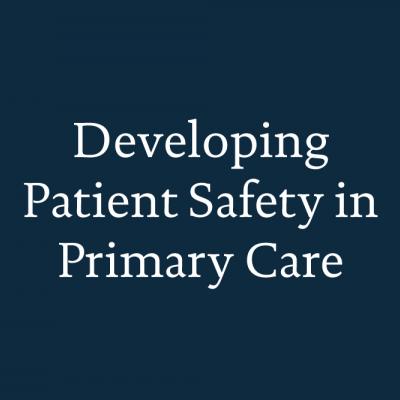Developing Patient Safety in Primary Care A programme to build expertise, experience and knowledge about patient safety

Key Points
- Programme worked to build expertise, experience and knowledge about patient safety in general practices and boards in NHS Tayside and NHS Quality Improvement Scotland.
- Ran between April 2010 and September 2012.
Improving patient safety often involves addressing issues that occur when patients move between primary and secondary care. Improving communication and the reliability of systems in place between the two care settings has the potential to significantly increase the quality and safety of patient care.
This programme worked in parallel with the Scottish Quality & Safety Improvement in Primary Care Closing the Gap project to build expertise, experience and knowledge about patient safety within general practices and boards in NHS Tayside, and NHS Quality Improvement Scotland.
Areas of work
The programme developed and tested change packages in four areas:
- Medication reconciliation at discharge from hospital.
- Medication reconciliation after attendance at outpatient appointments.
- Clinical communication between specialist outpatient clinics and primary care.
- Systems for managing results.
These areas were chosen as they are known to be major sources of clinical risk and can cause significant harm to patients as they move through the health care system.
Process
During the first year (the developmental stage), the team looked to define the current problems in the chosen areas using a review of research literature, medical indemnity cases, significant event audits (SEA), risk registers and themes from incident reporting systems such as NHS board DATIC systems and the National Patient Safety Agency.
During the second year (the testing stage), the team worked with a small number of practices and hospitals using collaborative methodology and ‘small cycles of change’ methods. They tested the sets of changes and shared learning on any improvements made. Data were collected to assess the impact of the changes.
Patients were involved with the practices to help identify where the gaps were in the systems, how they could be improved and what role the patients have in ensuring medication reconciliation takes place and results are followed up.
Work with us
We look for talented and passionate individuals as everyone at the Health Foundation has an important role to play.
View current vacanciesThe Q community
Q is an initiative connecting people with improvement expertise across the UK.
Find out more

